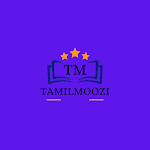Tamil Nadu took the lead in resisting colonial rule. In the late eighteenth century, the Palaiyakars resisted British attempts to establish their political hegemony in Tamil Nadu. Even after the colonialists were defeated, an uprising was organized by Indian soldiers and officers at Vellore Fort in 1806, which had echoes in many regions of South India. Thanks to the introduction of western education and the eventual emergence of educated Indians
In this lesson, we will study the role played by nationalists affiliated with various ideologies in Tamil Nadu.
along with four other friends started a magazine called The Hindu in 1878. It soon became a vehicle of nationalist propaganda. G. Subramaniam also started a Tamil national magazine Sudeshamithranin 1891 which became a daily in 1899. The establishment of The Hindu and Sudeshamitran inspired other newspapers like Indian Patriot, South Indian Mail, Madras Standard, Desabimani, Vijaya, India, India etc.
The partition of Bengal (1905) gave rise to the Swadeshi movement and changed the course of the freedom struggle. Popular leaders emerged in different parts of India, especially Bengal, Punjab and Maharashtra. They implemented the program of the Calcutta Congress, which called upon the nation to encourage indigenous enterprise, boycott foreign goods and promote national education.
After the Chauri Chaura incident, Gandhi felt that volunteers and people should be trained in non-violent struggle. As part of this initiative, Qadi focused on Hindu-Muslim unity and abolition of untouchability. He told the Congressmen, “Go across your districts and spread the message of Khadar, Hindu-Muslim unity and abolition of untouchability.
Take the youth of the country in hand and make them real soldiers of Swaraj. He made it mandatory for all Congress members to wear Khadar. All India Spinners Association formed. Meanwhile some Congressmen
were not satisfied with the dominant status and wanted to demand complete independence. In December 1929, Jawaharlal Nehru as President at the Congress Conference in Lahore declared Purna Swarajwas as the goal. It was decided to boycott the Round Table Conference and start a civil disobedience movement. 26 January 1930 was declared Independence Day and a nationwide pledge was taken to achieve Purnaswaraj non-violently through civil disobedience, including non-payment of taxes. The Indian National Congress empowered Gandhi to start this movement
.
Gandhi devoted the next few years to the abolition of untouchability.
Engagement with Dr. BR Ambedkar was influential in his views on the caste system.
He made his site Dr. B.R. Ambedkar transferred to the Satyagraha Ashram at Wardha
. He embarked on an all-India tour called the Harijan Tour. He started the Harijana Seva Sangh to eliminate discrimination. He worked for the promotion of education, cleanliness and hygiene and abstinence from alcohol among the lower classes.
An important part of the campaign was the temple entry drive. 8th January 1933 was observed as 'Temple Entry Day'.
Keywords
#10th class#Social Science#First revision#other districts#Qustion#First Revision Question Paper#முதல் திருப்புதல் தேர்வுவினாதாள்#பத்தாம்வகுப்பு#சமூகஅறிவியல்#Social Science#SSLC#Exam#Xth class








0 கருத்துகள்